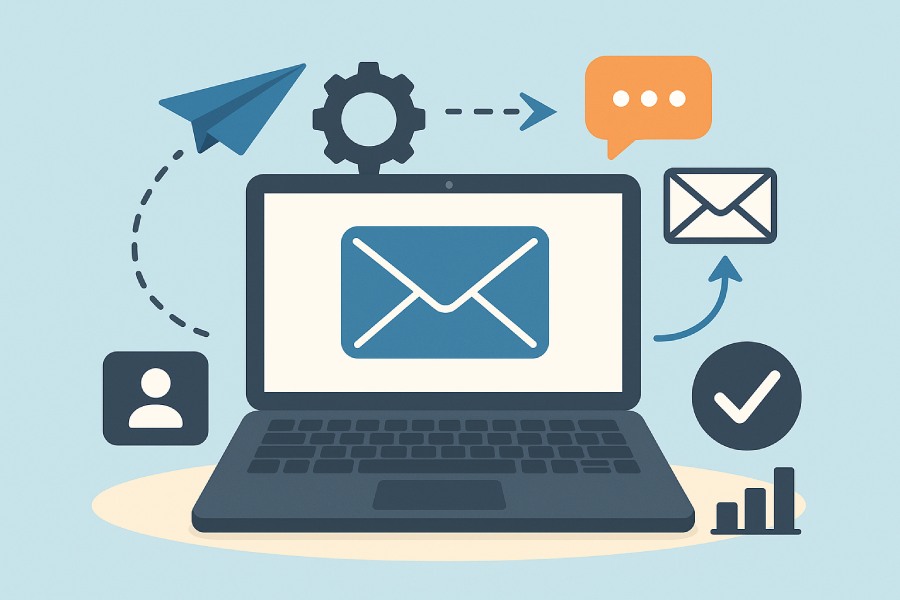Best Practices For Effective Cold Email Automation In Your Campaigns
Cold email automation can be a game-changer for businesses looking to scale outreach efficiently. When done right, it saves time, ensures consistency, and boosts response rates. However, automation without strategy often leads to spammy results and missed opportunities. To make your campaigns truly effective, you need the right balance of personalization, timing, and targeting. Let’s explore the best practices that turn automated cold emails into meaningful conversations and conversions.
Understanding Cold Email Automation: Definition and Benefits
Cold email automation refers to the use of specialized cold email software and automation tools to streamline the process of cold emailing potential leads. Instead of manually sending individual emails, sales and marketing teams leverage cold email automation tools like Woodpecker, Klenty, and Mailshake.com to dispatch personalized outreach sequences at scale.
These tools integrate AI capabilities and features such as sequence customization, email warmup tools like lemlist’s Lemwarm, and drip campaigns to optimize email deliverability and boost engagement metrics.
One of the primary benefits of cold email automation is improving email deliverability rates through inbox placement optimization. Many platforms provide built-in email deliverability toolkits that track email bounce rates, automate email validation and verification, and reduce spam complaints. Platforms such as Snov.io and Hunter.io excel in lead enrichment and email finder functionalities, ensuring robust lead databases with verified contact enrichment.
Additionally, cold email automation software enhances sales automation by merging outreach workflows across multichannel outreach formats. This includes linking email campaigns with LinkedIn automation or integrating VoIP calls, call recordings, and transcripts into outreach sequences for a comprehensive sales engagement approach.
For example, combining LinkedIn outreach through tools with automatic LinkedIn steps, alongside email outreach platforms like Reply.io, provides a cohesive cold outreach strategy to increase email open rates and reply rates.

Setting Clear Objectives for Your Cold Email Campaigns
Setting clear objectives is fundamental to any cold email marketing campaign’s success. Define measurable goals such as increasing email open rates by a specific percentage, improving email reply rates, or generating qualified meetings from your B2B lead database. Using CRM integrations with HubSpot or Salesforce streamlines tracking campaign performance metrics and campaign sequences, helping sales teams analyze success and optimize future outreach.
Your cold email strategy should align with overall lead generation goals, whether nurturing prospects or accelerating the sales funnel. Setting realistic Key Performance Indicators (KPIs) enables A/B testing of email sequence variables such as subject lines, call-to-action phrases, and personalization tactics including spintax to avoid repetitive messaging.
By leveraging AI personalization, many advanced cold email software platforms dynamically tailor messages based on lead prospecting data gathered from waterfall enrichment services or data enrichment layers embedded in the CRM. This further refines outreach personalization, boosting engagement rates and minimizing email bounce rates.
Building a High-Quality and Targeted Email List
A successful cold email campaign hinges on the quality and relevance of your lead database. Begin with a robust B2B lead database sourced from reputable providers like Apollo.io, Leadfuze, or Clay. These platforms utilize data enrichment and lead filtering capabilities to provide accurate lead contact information. Using email verification and email validation tools such as Bouncer can significantly reduce undeliverable emails, optimizing your email deliverability.

Lead segmentation is another critical aspect of building your targeted list. Segment your lead database by industry, company size, job title, or location, enabling more precise outreach personalization. Many cold email software like Saleshandy or Mailshake offer built-in lead segmentation features to customize campaign sequences based on specific criteria.
Employing multichannel outreach strategies diversifies contact attempts through email, SMS outreach, WhatsApp outreach, and LinkedIn integration to increase touchpoints. LinkedIn automation combined with cold calling or VoIP calls through Ringover or Aircall can enhance your lead prospecting efficiency. Integrations with Zapier or Make allow seamless data flow across tools, ensuring your high-quality lead database stays synchronized and enriched.
Crafting Personalized and Relevant Email Content
Personalization remains the linchpin of effective cold emailing. Incorporating personalization techniques such as AI personalization considerably elevates the relevance of your emails. AI-powered tools embedded in cold email automation software analyze lead data to customize emails at scale without losing the personal touch essential for engagement.
Utilize text variables and spintax to create dynamic content variations, facilitating unique emails that speak directly to each recipient’s pain points and interests. Additionally, including personalized images or personalized videos can captivate prospects visually, significantly improving email open rates and email reply rates.
Cold email tools like lemlist offer features for customized templates enriched with personalized images and videos to augment email warmup processes and reduce the email bounce rate. Combining these elements within email drip campaigns ensures sustained engagement without overwhelming your audience.
Moreover, sequence customization is vital; your outreach sequences should adapt to lead responses through automated email reply tracking and inbox rotation strategies. This optimizes mailbox reputation and boosts email deliverability rates across multiple accounts.

Leveraging Segmentation to Improve Engagement
Effective segmentation allows marketers to send hyper-relevant content to targeted groups, improving overall campaign success in cold outreach. Lead segmentation not only helps tailor content but also dictates multichannel sequences where prospects receive email outreach combined with LinkedIn steps, SMS outreach, or WhatsApp outreach.
Advanced cold email automation tools integrate segmentation capabilities with CRM integration platforms such as HubSpot integration or Salesforce integration for automated lead segmentation based on behavioral triggers or demographic filters. This automates workflow and ensures timely, relevant communications.
Segmenting leads by engagement levels allows running A/B testing campaigns that measure metrics like email open rates and email reply rates more accurately. Campaign performance metrics gathered through customizable dashboards in platforms like Reply.io or Klenty help marketers refine segmentation strategies continuously.
Waterfall enrichment, a technique used in lead enrichment, enriches partial or incomplete lead data progressively from multiple sources, enhancing the accuracy of segmentation and personalization for both multichannel outreach and cold email campaigns.
By combining segmentation with AI capabilities, especially in crafting outreach personalization with predictive insights, cold email marketing can reach its full potential. This strategic approach maximizes ROI and sustains high email deliverability, ensuring campaigns remain impactful and compliant with email outreach best practices.
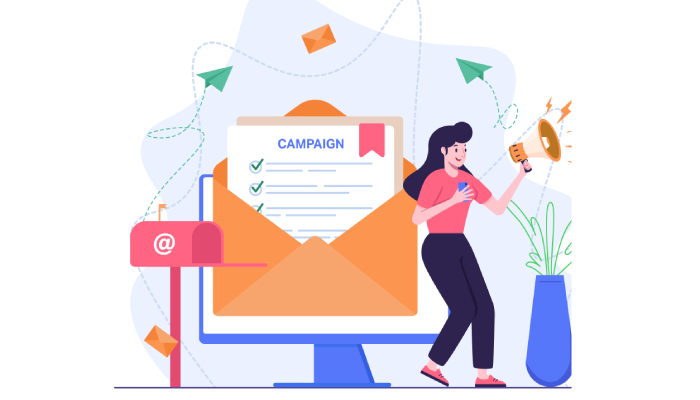
Designing Effective Email Sequences and Follow-ups
Creating compelling cold email campaigns fundamentally relies on well-structured email sequences and strategic follow-ups. Effective sequences not only enhance email deliverability but also foster engagement through personalized content tailored to a lead database refined by data enrichment and lead segmentation techniques. Utilizing cold email automation software such as Woodpecker.co or Reply.io facilitates the creation of complex campaign sequences that nurture prospects methodically without overwhelming them.
Incorporating AI personalization and AI capabilities can dynamically customize email outreach, integrating text variables, spintax, and even personalized images or personalized videos to catch the recipient’s attention. For instance, cold email software like lemlist offers advanced personalization tools that help craft messages resonating on an individual level, boosting email open rates and reply rates substantially.
Additionally, follow-up sequences should be manual or automatic, depending on prospect engagement, including integration with LinkedIn automation for multichannel outreach. Platforms like Klenty and Apollo.io enable linking email outreach with LinkedIn steps in both automatic LinkedIn steps and manual LinkedIn steps formats. This synergy amplifies the multichannel sequencing effect, ensuring prospects receive consistent yet personalized messaging across different platforms, heightening the chances of conversion.
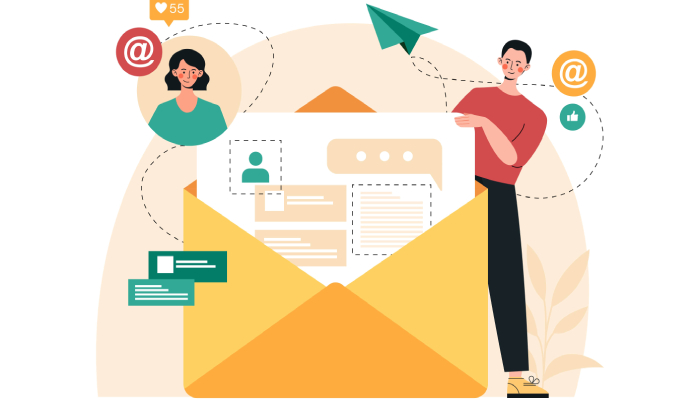
Choosing the Right Cold Email Automation Tools
With a plethora of cold email automation tools available—ranging from Saleshandy and Mailshake to Instantly and Snov.io—selecting the right software requires careful consideration of feature sets tailored to your sales engagement strategy. Factors to evaluate include:
- Email Deliverability Toolkit: Tools like lemwarm provide essential email warmup features to enhance inbox placement optimization and reduce email bounce rate.
- AI Capabilities: Platforms leveraging AI personalization improve outreach personalization by analyzing customer behavior to tailor messages.
- CRM Integration: Seamless integration with HubSpot, Salesforce, Zapier, or Make enables syncing cold outreach and cold calling efforts with call recordings and call transcripts for a holistic view.
- Lead Database Support: Access to a robust B2B lead database and data enrichment services foster better lead prospecting, with options for waterfall enrichment and email verification to maintain list health.
- Multichannel Outreach Features: Comprehensive outreach platforms that combine email outreach, SMS outreach, WhatsApp outreach, and LinkedIn outreach allow sales teams to deploy effective sales automation workflows.
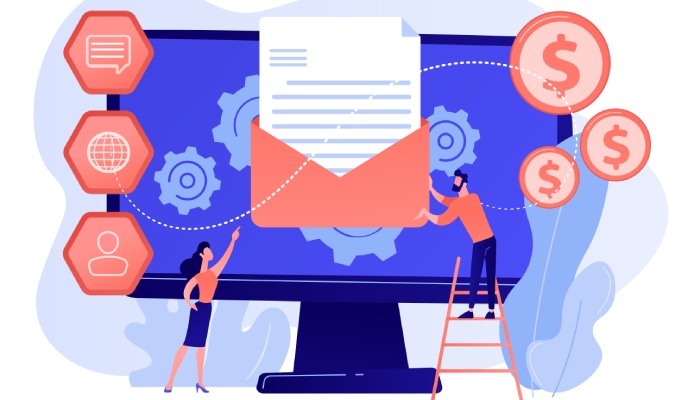
Ensuring Compliance with Email and Data Privacy Laws
Cold email marketing strategies must adhere strictly to email and data privacy regulations like GDPR, CAN-SPAM, and CASL. Compliance is not only a legal responsibility but also critical for maintaining long-term email deliverability rates. Email automation software like Mailshake.com and Woodpecker emphasize features such as automatic unsubscribe links, transparent sender information, and opt-in verification protocols.
Implementing routine email validation and email verification, possibly through tools like Bouncer, helps maintain clean lead contact information, thereby reducing email bounce rate and protecting your sender reputation. Additionally, managing consent effectively within a cold outreach or multichannel sequence offers prospects control over their data and communication preferences, aligning outreach personalization with ethical marketing practices.
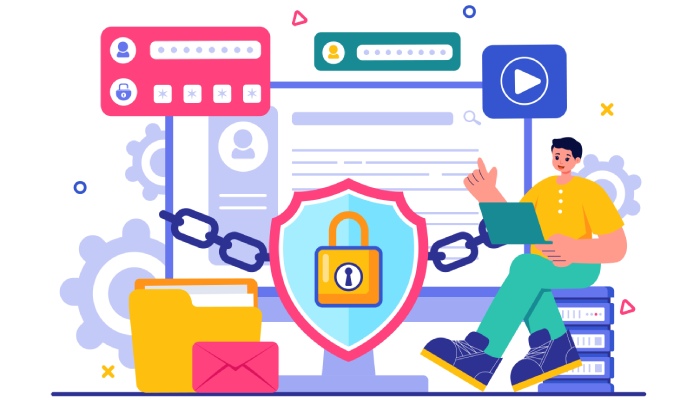
Optimizing Subject Lines to Increase Open Rates
Subject lines are pivotal in driving email open rates, a cornerstone metric influencing the success of cold emailing efforts. An optimized subject line leverages creativity fused with personalization, often enhanced via AI capabilities embedded in cold email software like Saleshandy or Klenty.
Incorporating text variables and spintax enables unique subject lines across outreach sequences, avoiding spam filters and enhancing inbox rotation practices for better email inbox placement. Personalized subject lines, sometimes enriched with personalized images or referencing recent LinkedIn interactions, can dramatically increase response rates. Testing subject lines through systematic A/B testing allows marketers to identify language that resonates most effectively with their target segments within a lead database.
Utilizing A/B Testing to Refine Campaign Elements
A/B testing forms the backbone of data-driven cold email marketing by providing actionable insights into various campaign components. Cold email automation tools such as Reply.io and Mailshake facilitate split testing for subject lines, email content, call-to-action placements, and timing within email drip campaigns or outreach workflows.
By tracking detailed email campaign analytics and campaign performance metrics—like email open rates, email reply rates, and email bounce rate—sales teams can iteratively optimize each element of their cold email campaigns. Integrating these insights with CRM platforms like HubSpot or Salesforce enables refined segmentation and enhanced outreach personalization powered by AI personalization engines.
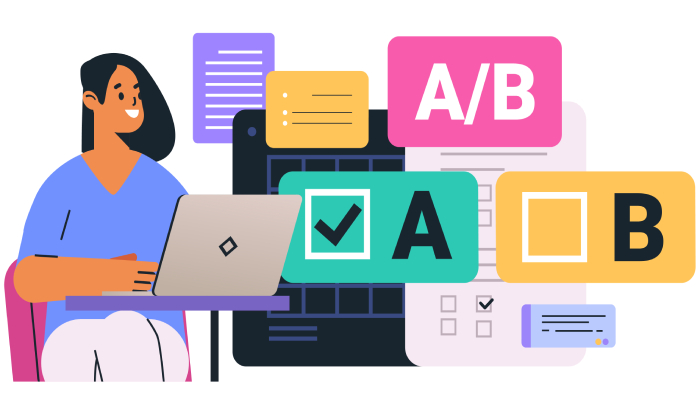
Employing A/B testing across multichannel sequences, including LinkedIn outreach and SMS outreach, reveals the most effective outreach timing and messaging modalities for lead conversion. This continuous refinement amplifies the overall effectiveness of cold email automation and sales engagement initiatives.
Monitoring Key Metrics and Analyzing Campaign Performance
Sustained success in cold email marketing demands meticulous monitoring of campaign KPIs through customizable dashboards available within many cold email software solutions such as Saleshandy.com or Woodpecker.co. Key metrics include:
- Email Deliverability Rates: Ensuring emails reach intended inboxes, aided by strategic email warmup and email deliverability toolkits.
- Email Open Rates and Reply Rates: Indicators of message relevance and resonance.
- Email Bounce Rate: Critical for maintaining sender reputation and lead database health.
- Email Response Tracking: Identifying which messages spur engagement.
Comprehensive email campaign analytics can extend to integrated call recordings and call transcripts when companies integrate VoIP platforms like Ringover or Aircall within their outreach workflows, providing a holistic view of customer interactions.
Leveraging these insights within CRM integrations (e.g., Salesforce integration or HubSpot integration), paired with data enrichment tools such as Clay or Leadfuze, fortifies lead prospecting by maintaining accurate and updated lead contact information. The combination of cold email automation software with multichannel outreach and AI personalization capabilities results in refined, highly productive cold emailing strategies with measurable return on investment.

Strategies for Avoiding Spam Filters and Maintaining Deliverability
Maintaining high email deliverability is crucial for any cold emailing campaign relying on cold email automation. Effective cold email software such as Woodpecker, Mailshake, and Reply.io offer essential tools to ensure campaigns avoid spam filters while maximizing inbox placement. One of the foundational steps is a thorough email warmup process. Platforms like lemwarm simulate natural sending patterns by gradually increasing your email volume and engagement rates, thereby enhancing sender reputation and reducing the email bounce rate.
Additionally, employing robust email validation and email verification through services like Hunter.io or Bouncer can drastically cut down invalid addresses, a common cause of reduced email deliverability rates. Integrating waterfall enrichment strategies, where multiple data sources provide incremental lead enrichment and validation, strengthens your B2B lead database, ensuring messages reach legitimate contacts.
Personalization plays a critical role in bypassing spam filters. Utilizing AI personalization features within cold email automation tools facilitates dynamic content insertion such as text variables, spintax, personalized images, and personalized videos.
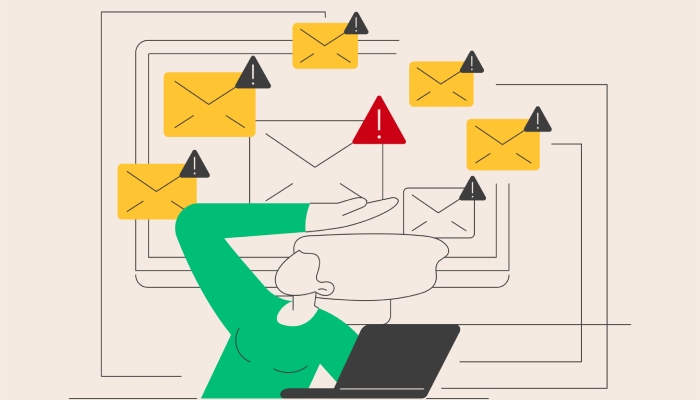
This not only elevates the recipient’s engagement but signals email providers about genuine, relevant mail content, thereby improving email open rates and email reply rates. Another best practice involves optimizing campaign sequences with A/B testing to identify messaging that resonates best without triggering spam flags.
Combining inbox rotation—alternating sending accounts and IPs—with regular monitoring via email campaign analytics and email deliverability toolkits can sustain long-term email deliverability. Leading platforms like Saleshandy.com, Klenty, and Nureply provide dashboards to track email reply rates and engagement, helping teams pivot away from sequences that cause deliverability dips.
Integrating Cold Email Automation with CRM and Sales Processes
Incorporating cold email automation seamlessly into existing CRM and sales workflows enhances operational efficiency and lead management. Integration with major CRM platforms like HubSpot, Salesforce, or through automation connectors like Zapier and Make creates a unified ecosystem where lead contact information, enriched through tools like Clay and Leadfuze, is updated automatically.
Most cold email software offers native connectors or APIs for CRM integration, enabling real-time syncing of outreach data, campaign responses, and contact attributes. This synchronization supports advanced lead filtering and lead segmentation, allowing sales teams to tailor email drip campaigns and multichannel outreach efforts effectively.
Further, combining cold emailing sequences with LinkedIn integration—whether through manual LinkedIn steps or automatic LinkedIn steps enabled by tools like Apollo.io or LinkedIn automation platforms—magnifies touchpoints across channels. Coupled with cold calling and VoIP calls using providers like Aircall or Ringover for call recordings and call transcripts, sales teams can build comprehensive engagement profiles, boosting sales engagement.
By embedding cold email automation within a broader outreach workflow, sales reps can leverage campaign performance metrics and CRM analytics to refine strategies continuously. Enhanced personalization and AI capabilities further enable real-time segmentation adjustments based on prospect responsiveness, making the sales process more dynamic and data-driven.
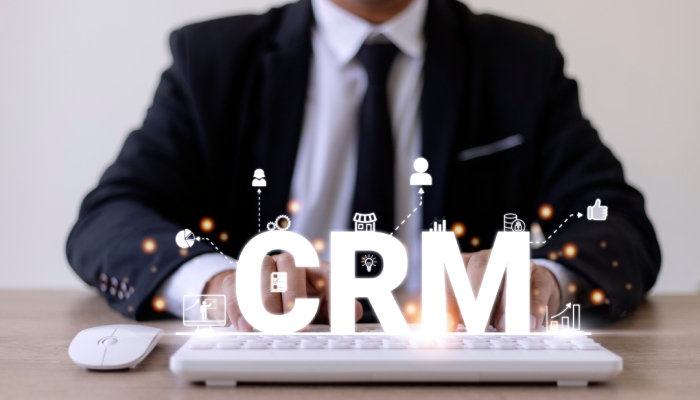
Common Mistakes to Avoid in Cold Email Automation
Despite its benefits, cold email automation is prone to pitfalls if not managed carefully. A frequent error is neglecting the email warmup phase before launching full-scale campaigns, which risks high email bounce rates and damaged sender reputation. Tools like lemwarm and Instantly offer automated email warmup solutions that should be leveraged to ensure stable email deliverability rates.
Another mistake is over-reliance on generic templates without sufficient personalization or misuse of text variables and spintax that result in awkward messaging. This not only reduces engagement but can also trigger spam filters. Platforms such as lemlist and Mailshake emphasize outreach personalization with AI-driven dynamic content, allowing campaigns to stand out authentically.
Ignoring email validation leads to sending campaigns to outdated or invalid addresses, negatively impacting deliverability—always integrate validation tools like Bouncer or Hunter.io prior to outreach. Similarly, running campaigns without proper A/B testing of subject lines, message content, or timing misses opportunities to optimize email open rates and email reply rates.
Lastly, failing to integrate cold email efforts into CRM and sales workflows leads to data silos, inefficient follow-up, and missed leads. Avoid manual data entry by automating syncing through CRM integration tools, which helps maintain accurate, enriched lead databases and quicker response tracking.
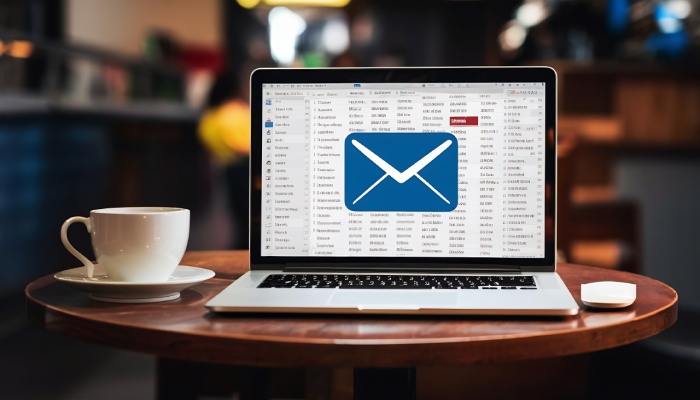
Future Trends in Cold Email Automation and How to Prepare
The landscape of cold email automation is rapidly evolving, driven by advancements in AI capabilities and increasing demand for multichannel strategies. The future will see deeper integration of AI personalization, where cold email software intelligently crafts outreach sequences personalized at scale, utilizing behavioral and demographic data captured from enriched lead databases.
Expect wider adoption of multichannel outreach combining cold email with real-time SMS outreach, WhatsApp messaging, and LinkedIn outreach, orchestrated through unified platforms that manage comprehensive outreach sequences. Tools like Apollo and Klenty already offer elements of these integrated experiences, while new entrants are using AI to automate intelligent decision-making about which channel to activate next based on prospect engagement patterns.
Enhanced email deliverability solutions will incorporate predictive analytics to preemptively adjust warmup processes, inbox rotation, and sending patterns, ensuring optimal email inbox placement despite evolving spam filter algorithms. Leveraging detailed campaign performance metrics and user-friendly customizable dashboards will become standard to monitor and refine cold outreach efficacy continually.
To prepare, organizations should invest in cold email software with open API ecosystems supporting robust CRM integration, and embrace AI-driven data enrichment platforms like Clay or Leadfuze to maintain high-quality lead prospecting. Training sales teams to combine cold emailing with automated LinkedIn steps and synchronized cold calling efforts will maximize lead engagement and accelerate pipeline velocity.

FAQs
What is the importance of email warmup in cold email automation?
Email warmup gradually builds sender reputation by increasing sending volume and engagement over time, which helps avoid spam filters and improve email deliverability rates. Tools like lemwarm automate this process to optimize inbox placement.
How does AI personalization enhance cold emailing campaigns?
AI personalization leverages data-driven algorithms to tailor email content dynamically for each recipient, increasing relevance and engagement. This boosts email open and reply rates while reducing the risk of messages being marked as spam.
Can cold email automation be effectively integrated with CRM systems?
Yes, most modern cold email software supports native or API-based integration with leading CRMs like HubSpot and Salesforce, enabling seamless synchronization of contact data, campaign sequences, and response tracking to streamline sales workflows.
What are common mistakes to avoid in cold email campaigns?
Avoid skipping email warmup, neglecting email validation, overusing generic templates without personalization, failing to conduct A/B testing, and not integrating campaigns with customer relationship management (CRM) systems. These errors lead to lower deliverability and engagement.
How is multichannel outreach shaping the future of cold emailing?
Multichannel outreach combines email with LinkedIn, SMS, WhatsApp, and calling into cohesive campaigns, increasing touchpoints and engagement odds. AI-driven platforms orchestrate these channels intelligently based on recipient behavior.
How can I improve email deliverability in my cold email campaigns?
Use email validation tools to clean your lead database, perform gradual email warmups, personalize content using AI capabilities, monitor campaign analytics for engagement metrics, and employ inbox rotation strategies to maintain sender reputation.
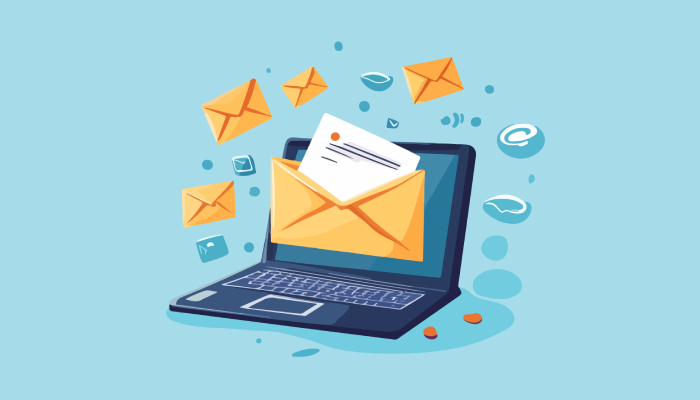
Key Takeaways
- Employing email warmup and validation tools is essential to maintain high email deliverability and reduce bounce rates in cold email automation.
- Integrating cold email software with CRMs like Salesforce and HubSpot streamlines workflows and enables effective lead segmentation, enrichment, and response tracking.
- AI personalization and multichannel outreach significantly enhance engagement, combining cold emailing with LinkedIn and SMS boosts response rates.
- Avoid common mistakes such as skipping warmup, neglecting testing, and insufficient personalization to optimize cold email marketing success.
- Future-ready cold email automation leverages AI-driven personalization, predictive deliverability tools, and integrated multichannel sequencing to improve campaign performance metrics.

